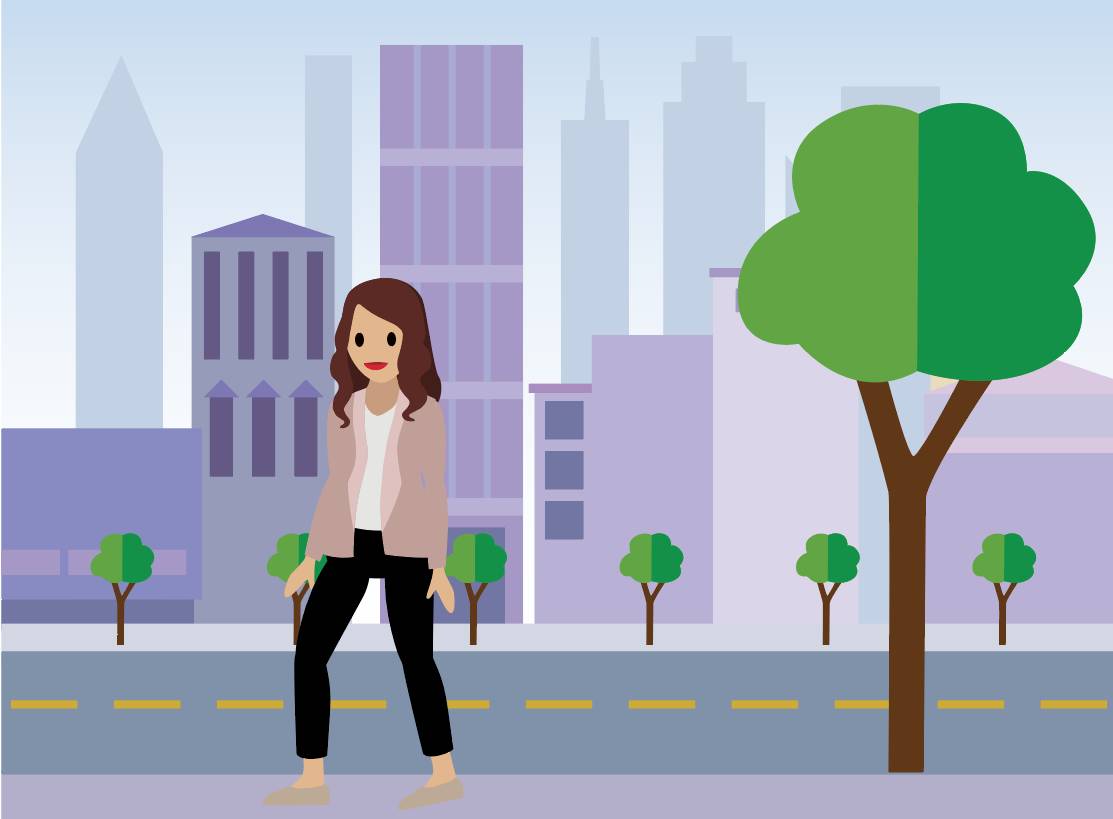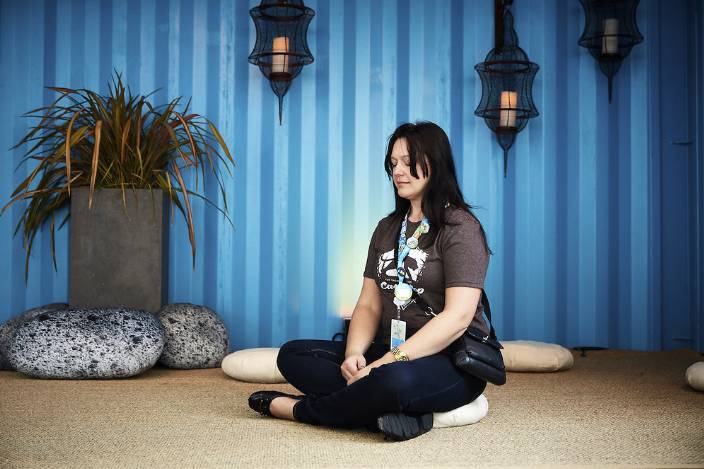Start Living Mindfully
Learning Objectives
After completing this unit, you’ll be able to:
- Describe ways to start building a practice of mindfulness.
- Understand how you can bring more mindfulness to your company or team.
Make Mindfulness Part of Your Daily Routine
We’ve already explored the ways that mindfulness can become part of some of your regular activities—like sitting, walking, and eating—but there are plenty of other opportunities to squeeze more mindfulness into your day. From regular meditation to brushing your teeth mindfully, things big and small can make a difference.
Start a Regular Meditation Practice
Beginning a meditation practice doesn’t have to be overwhelming if you start small. To get you started, we’ve put together some simple tips for you to ease into meditation and find what works for you.
-
Start with 5–10 minutes a day. As you begin to feel the benefits of a regular practice, you’ll naturally want to prioritize and extend the time.
-
Be consistent. You can try out different times of day to start, but once you find what works best for you, set a daily reminder on your calendar to keep it up!
-
Be flexible. Recognize when something isn’t working. If your mind is restless at first, try another position—maybe lying down—for a few minutes. You can always return to your starting position when you feel ready.
-
Apply it. Before an important meeting you can take 5–10 minutes to sit and calm your mind and body. When you experience a strong emotion—some anxiety, stress, or even sadness—take a moment to practice. Come back to your breathing, so that you are no longer carried away by your emotions.
-
Do it together. Practicing mindfulness with friends or colleagues—eating lunch in mindfulness together, creating a sitting group once or twice a week in a quiet place—is a great way to benefit from and encourage each others’ commitment to practice.
-
Keep a journal . After your meditation, it’s important to reflect on and identify your intentions for the day. Or if you meditate at the end of the day, how did those intentions go? Did you rush through the day? Did you take time to focus on your breath and your surroundings? What kinds of thoughts did you have? Were they negative or positive? It only takes a minute or two to capture these thoughts in a journal. Seeing your patterns day after day not only provides you with feedback, but also inspires you to be more mindful in the days ahead.

Create a New Habit

“The bell of mindfulness is a call, calling you back to the present moment, for you to be alive, for you to be free in order to get in touch with the wonders of life that are available in the here and the now.” —Zen Master Thich Nhat Hanh
It’s easy to get lost in the day-to-day—meetings, errands, and projects (oh my!). The folks at Thich Nhat Hanh’s Plum Village practice center keep themselves from getting lost in this shuffle by using a bell of mindfulness when working at their computers, as a reminder to return to mindful breathing and awareness throughout the day. With practice, they’ve created the habit of working with mindfulness. And you can create positive new habits, too.
So if you could bring more mindfulness to any part of your day, what would it be? Pick one activity or practice and challenge yourself to keep at it for a set length of time. Here are some ideas to get you started.
-
Brush your teeth mindfully. Relax your body, feel your feet on the ground, and simply enjoy the act of brushing your teeth by noticing all of the sensations: how the bristle feels against your gums, the brush swoosh as you move to different areas of your mouth and so on.

-
Drink your morning tea or coffee mindfully. “Drink your tea slowly and reverently, as if it is the axis on which the whole earth revolves—slowly, evenly, without rushing toward the future.” —Thich Nhat Hanh
-
Follow your breathing on your morning commute. Take the time to check in with your body and feelings, and take care of them by allowing yourself to just be with whatever you sense or feel without trying to change it. Check out the guided meditation to return to your breath in unit 2.
-
Set a simple reminder on your phone. Set a timer to sound every 30 minutes as a reminder to stop, breathe, and release tension in the body. This is especially helpful while working at your computer. You can also take a moment to stand up and stretch.
-
Go on a walking meditation. Find a peaceful route, perhaps in a nearby park or even on a quieter floor of your office building, and spend 10 minutes walking with mindfulness. Find instructions on mindful walking in the last unit .

Bring Mindfulness to Your Team
Many of these same techniques can be infused into your company culture. Wondering where to start? We’ve got you covered.
To begin, know that your own energy of presence and calm is the greatest contribution you can make to your team or company. With that in mind, here are some tips to make mindfulness a priority for your whole team.
- Bring your awareness to how you show up—physically, mentally, and emotionally—during meetings, conversations, and your time at the office. Are you able to follow your breathing while listening? Can you hear beyond the words, to understand what your colleague is really trying to say?
- Use mindfulness to be aware when tension arises in a conversation, and use your mindful breathing to calm your body and mind. Your breathing gives you space and clarity in challenging situations, empowering you to choose how to respond.
- Start each meeting or presentation with a short sitting meditation to ground everyone, to improve focus, attention, and concentration, and lay the foundation for calm and amicable proceedings.
- Bring in a local monastic or experienced practitioner to lead a mindfulness workshop at your next team-building event. Not sure who to contact in your city? You can reach out to contact@pvengagedbuddhism.org to be connected with a local monastery or dharma teacher.
- Create a space at your office that can be used for meditation. It doesn’t have to be fancy—somewhere quiet with some meditation cushions can do the trick!
- Promote a free mindfulness app or provide your employees with memberships to a paid app. These can bridge the divide between mindfulness and technology.
- Make your next team outing a mindfulness retreat. Talk about putting your money where your mindfulness is!
- Bring mindfulness to your company events—like we do at Dreamforce and our internal Press Pause Speaker Series—with guided meditations, presentations from mindfulness experts, and more. Events can be a great platform to share your own experience with your customers and employees.

The Power of Practice
It’s clear that mindfulness can transform the way we live and work. It reduces stress, increases focus and memory, promotes greater self-awareness, and builds resiliency, ultimately helping us deal more effectively with day-to-day stresses at home and in the office.
As we discovered, there are almost limitless ways to incorporate more mindfulness into your daily routine—sitting and walking meditations, mindful eating, and more. So now it’s up to you! How can you bring more mindfulness to your daily activities? And to your team? Remember, your energy of presence and calm is the greatest gift you can bring to those around you.
